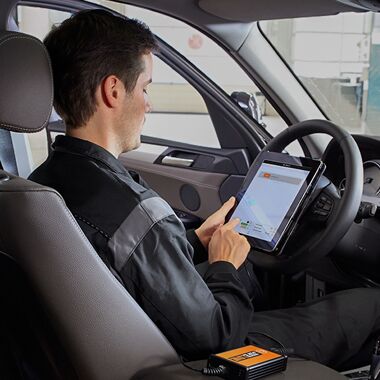As soon as it has been established that the towbar, the test results and the welding mold are in order, the application for approval can be submitted to the TÜV / VCA. In the meantime, a test series of 10 pieces is being made. The trial series is produced in 5 steps with control moments.
1. The individual parts are produced and checked by the measurement department.
2. The bag with all loose parts is assembled. Think of the mounting materials, manual, ball and loose parts.
3. The beam part is welded. There is an extra check on the dimensions so that the towbar fits perfectly on the car.
4. The tow bars are coated and a complete product is put together.
5. This product goes to the measuring room where it is completely disassembled for a final inspection.









